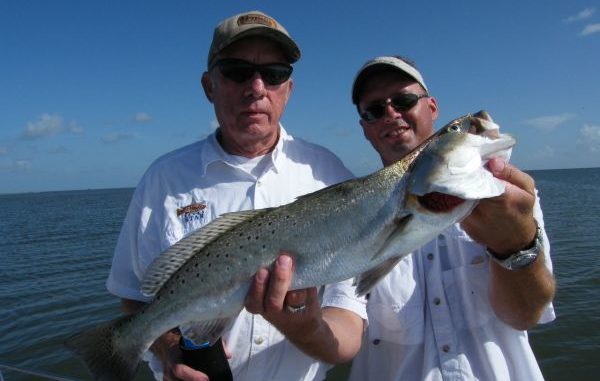
Raccoon Island’s productivity comes with a price, especially for anglers unfamiliar with its dynamics — both natural and man-made.
“The first thing you’ve got to be aware of are the sandbars on both ends of the island,” Lake said. “On the eastern end heading north past the rock jetties, it’s easy to figure you can just hang a quick left to get to the backside; there’s a huge sandbar there.
“I’d say you really need to continue north a good half a mile before making that turn.”
Lake indicated that the extreme western end of the island — Raccoon Point — is also a dangerous path for those unfamiliar with the underwater terrain. Imagining the length of the island a good ways farther out than the last bit of visible sand is a good policy when traveling at speed, he said.
Andre Boudreaux of Boudreaux’s Marina in Cocodrie caters to numerous anglers fishing the Isles Denieres chain, and he said boaters and waders need to proceed with caution, especially on their first trips.
“Usually even the regulars’ last trips of the summer take place in late August, early September,” said Boudreaux. “That’s seven months worth of tide and storms that can really shift things around. You need to be careful of the changes.”
The super-productive trench on the western end is also dangerous for wade fishermen unfamiliar with the terrain. Even though the drop-off isn’t over most anglers’ heads, its sheer suddenness and the subsequent strong current flow can cause panic for victims.
“It’s about a 4-foot drop into a pretty heavy current,” said Lake.
The cut in the middle of the island — just north of the western-most rock jetty on the beach side — is scarcely fit for safe passage on even the highest of tides.
“The channel is very thin, not very deep and seems to shift a lot,” said Lake. “Every year you see a bunch of boaters who think they can just run through there on step. Some of them make it, but a lot of them run themselves high and dry, kicking up water and sand 30 feet in the air.
“The best advice I can give on that is to simply not try it.”
Less dangerous but often longer-lasting and costly in its affects are several rusty sign poles left long ago by a government agency warning visitors that the island was off limits to human access due to thousands of brown pelicans, terns, gulls and virtually every other seabird seen in the state.
“They put down these metal poles many years ago, all of which have rusted and fallen over at the water line,” Lake said. “I know where eight of them are by heart, but I still got a big gash on my boat last year.
“You can’t see them on anything but an extremely low tide.”